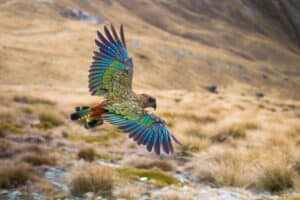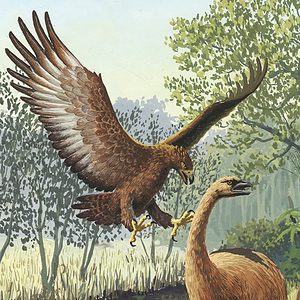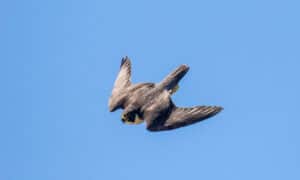Birding in Michigan is a popular pastime, and the state offers many opportunities, from national parks and trails to the Great Lakes Coastline. Whether you are a beginner birder or like to casually view birds at your feeder, this handy guide will help you identify blue birds in Michigan. Discover where they live, what they eat, and how they sound.
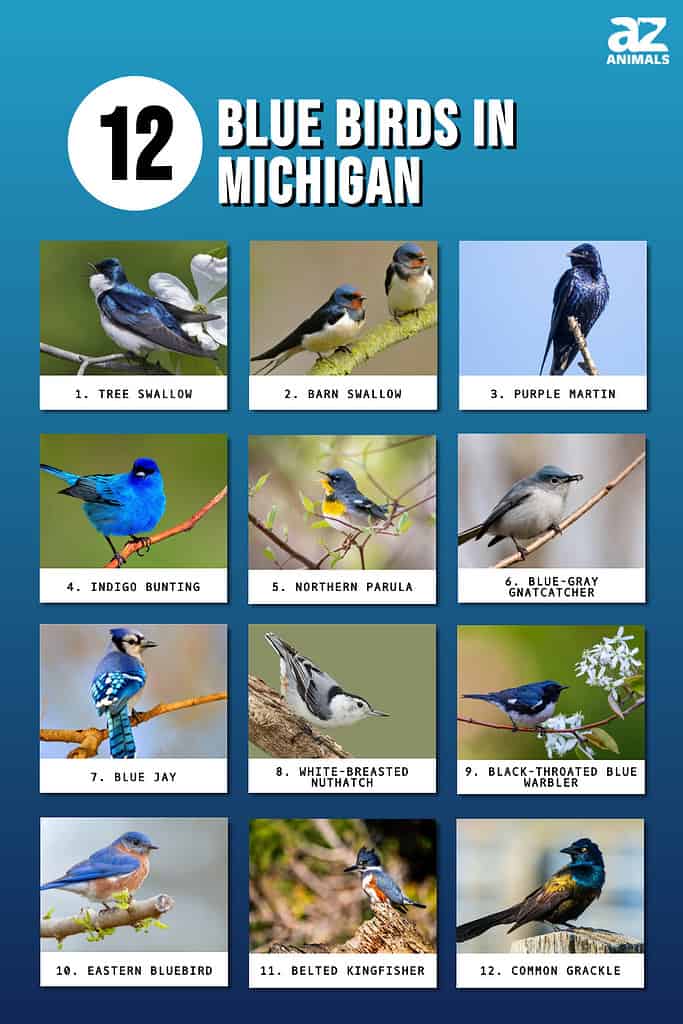
1. Tree Swallow
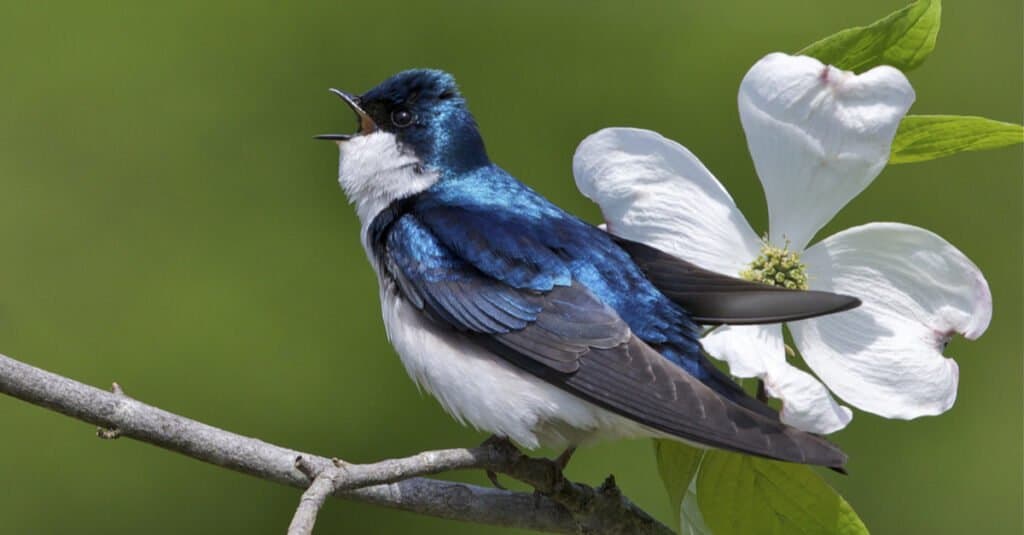
The tree swallow’s plumage is bluish-green above and white below with brownish-black wings and tails.
©Tom Reichner/Shutterstock.com
Habitat: You can find tree swallows throughout Michigan during the breeding season in spring and summer. They live in open country areas near water, such as marshes, lakes, and meadows.
How to Identify: They are relatively small songbirds with long, pointed wings and notched tails. Their plumage is bluish-green above and white below with brownish-black wings and tails.
Diet: Insects, berries, and seeds.
Vocalizations: High-pitched chirps and gurgles.
Nest: A cup of grass placed in holes in dead trees.
2. Barn Swallow
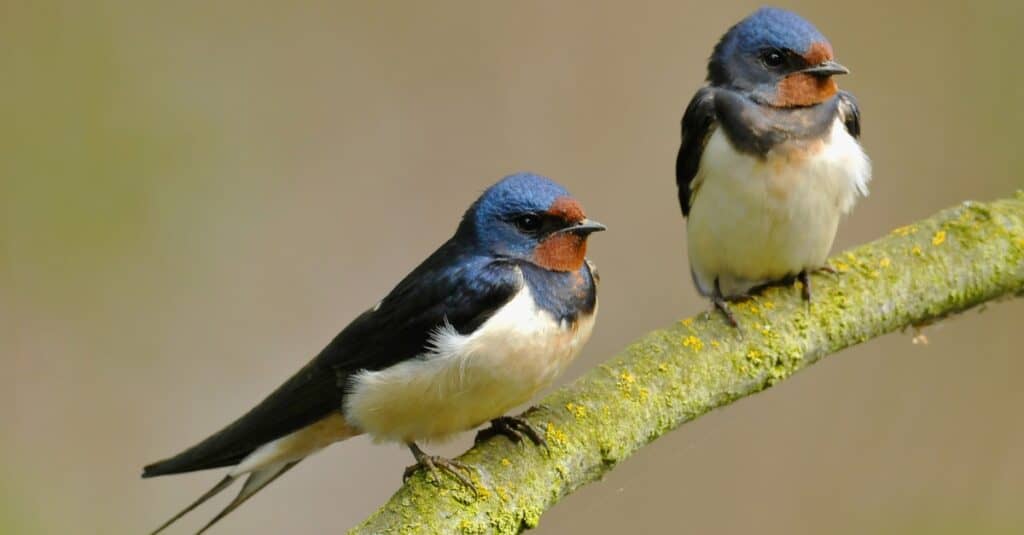
Barn swallows breed throughout Canada and the United States, including Michigan.
©CezaryKorkosz/Shutterstock.com
Habitat: The barn swallow breeds throughout Canada and the United States, including Michigan. This species is common around human habitations, like parks, baseball fields, farms, and beaches.
How to Identify: It is slightly larger than the tree swallow and features a flat head, broad shoulders, and pointed wings. They are deep steely blue above with rufous-colored underparts.
Diet: Insects, spiders, snails, berries, and seeds.
Vocalizations: Twitter warbles and mechanical whirrs.
Nest: A cup of mud and dried grass under eaves or open buildings.
3. Purple Martin
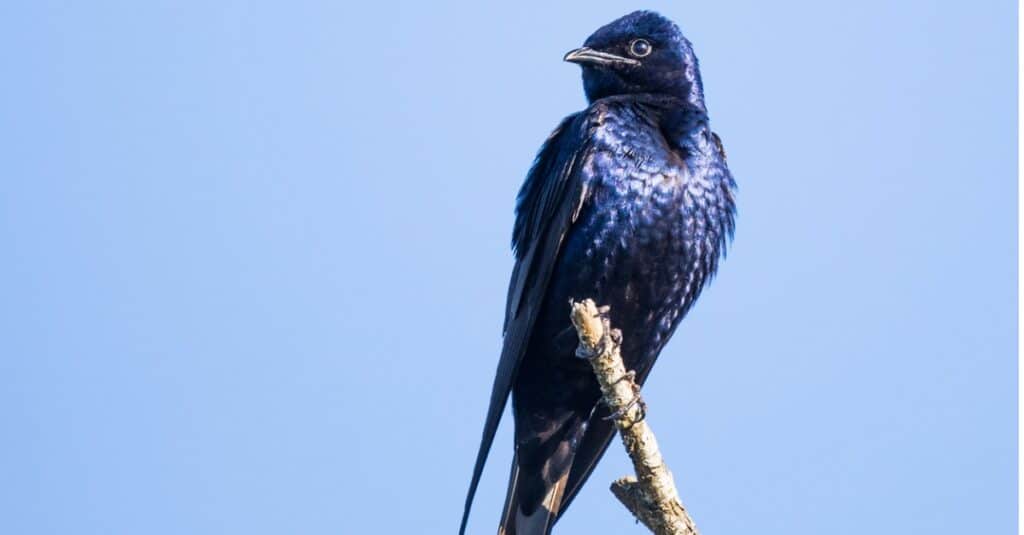
The purple martin is an acrobatic hunter, capable of catching bees while in full dive.
©iStock.com/Jeff Huth
Habitat: The purple martin spends its springs and summers in the Great Lakes state and throughout the eastern half of the country. You can find them in towns, farms, mountain forests, and many other common semi-open areas.
How to Identify: Despite its name, purple martins are dark bluish-purple, and iridescent. Their wings and tails are brownish-black. They are large birds with broad chests, tapered wings, and forked tails.
Diet: Insects and spiders.
Vocalizations: Throaty chirps and rattles.
Nest: A cup made of leaves and grass placed in old woodpecker holes.
4. Indigo Bunting
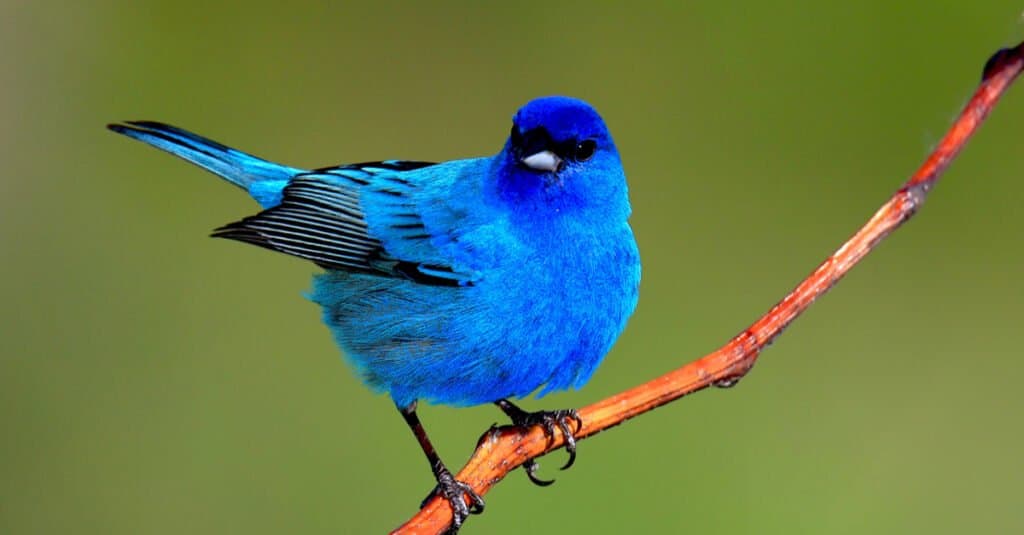
Indigo buntings live in brushy pastures and wood wedges, where they eat seeds and insects.
©John L. Absher/Shutterstock.com
Habitat: Another breeding bird in Michigan, the indigo bunting inhabits the state during spring and summer. You can find them in brushy pastures, wood edges, and roadsides.
How to Identify: The male’s summer plumage is all blue, with the head darker than the body. It also features a silver beak and dark streaks on its wings and tail. They are relatively small and stocky with short, thick bills and round tails.
Diet: Seeds and insects.
Vocalizations: Clear, high-pitched notes and short “chip” calls.
Nest: Open grass cup in dense shrubs or trees.
5. Northern Parula
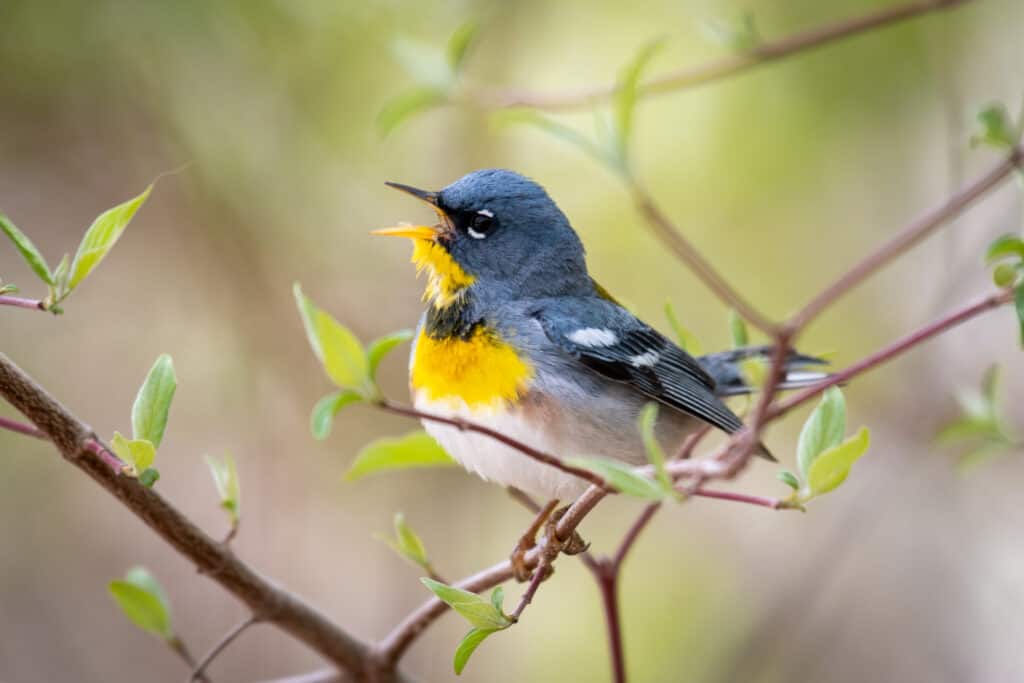
The northern parula lives in forest canopies during summer and tropical plantations in the winter.
©Nattapong Assalee/Shutterstock.com
Habitat: Most northern parulas pass through Michigan during migration. But small groups breed near the Great Lakes. Look for them in humid woods, coniferous forests, and swamps.
How to Identify: These small warblers have short tails and thin bills. They are bluish-gray above and white below with bright yellow chests and throats and some black streaking on the wings.
Diet: Insects, spiders, larvae, and berries.
Vocalizations: Buzzy trills and sharp chips.
Nest: Small hanging pouch in tree lichens.
6. Blue-Gray Gnatcatcher
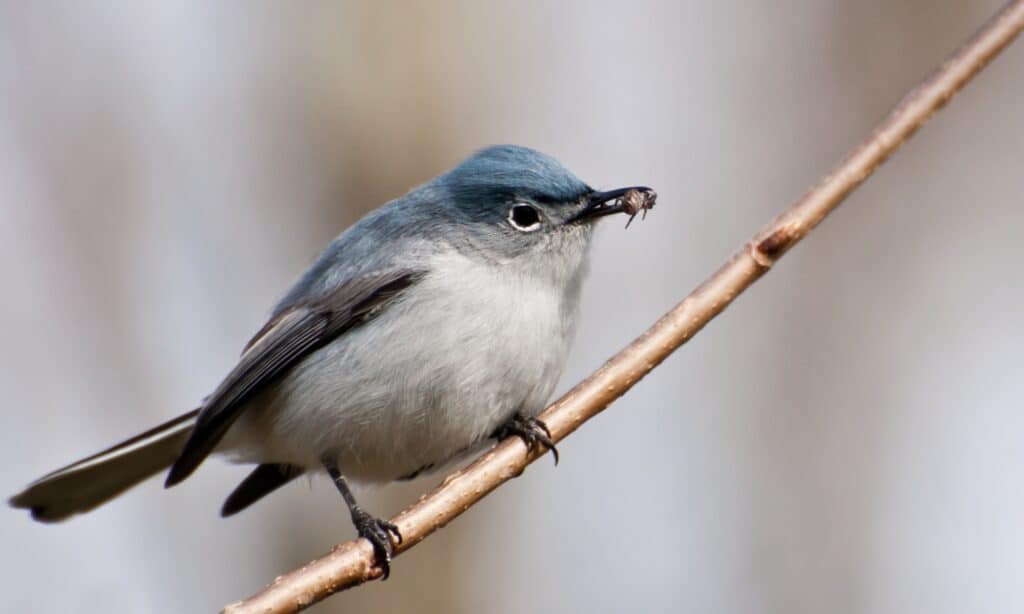
The blue-gray gnatcatcher is tiny, slim, and features light bluish-gray plumage and mostly black tails.
©iStock.com/JasonOndreicka
Habitat: You can find blue-gray gnatcatcher breeding populations in northern Michigan. Find them in open woods, deciduous forests, and thickets.
How to Identify: They are tiny and slim with long legs and long tails. These birds are pale bluish-gray with light gray to white underparts and mostly black tails.
Diet: Insects and spiders.
Vocalizations: Continuous sharp chips and nasal calls.
Nest: Open grass cup in a tree.
7. Blue Jay
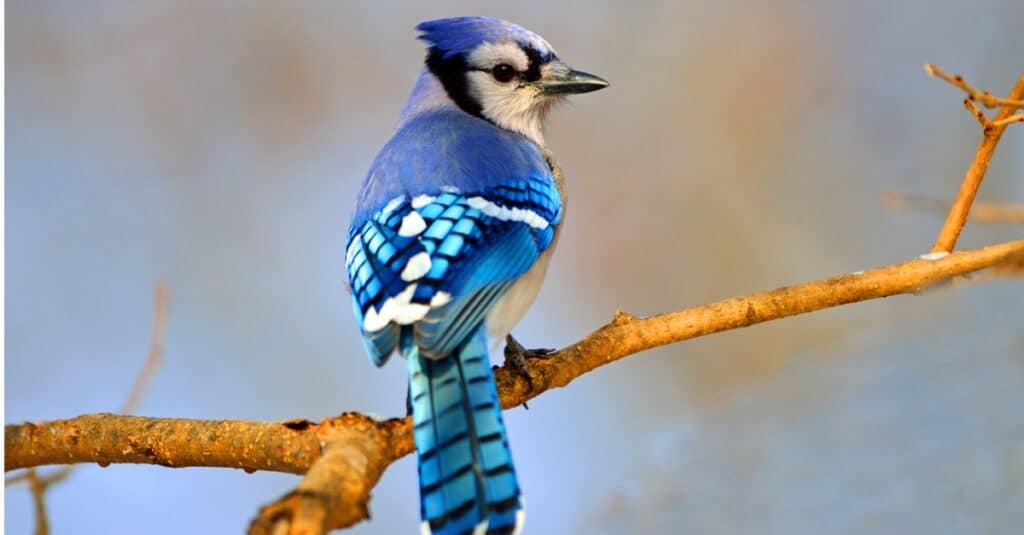
Blue jays are large songbirds with crests and long tails. They live in towns and suburban gardens.
©iStock.com/BrianEKushner
Habitat: They live year-round in the eastern United States, including all over Michigan. You can find them in woodlands, groves, towns, suburbs, gardens, and many other areas near humans.
How to Identify: Blue jays are pretty large songbirds with crests and long, rounded tails. Their plumage is a mix of various shades of blue, black, and white.
Diet: Seeds, grains, nuts, berries, small fruits, insects, rodents, reptiles, baby birds, and carrion.
Vocalizations: Quiet clicks and loud jeers.
Nest: A bulky twig cup placed in the fork of a tree.
8. White-Breasted Nuthatch
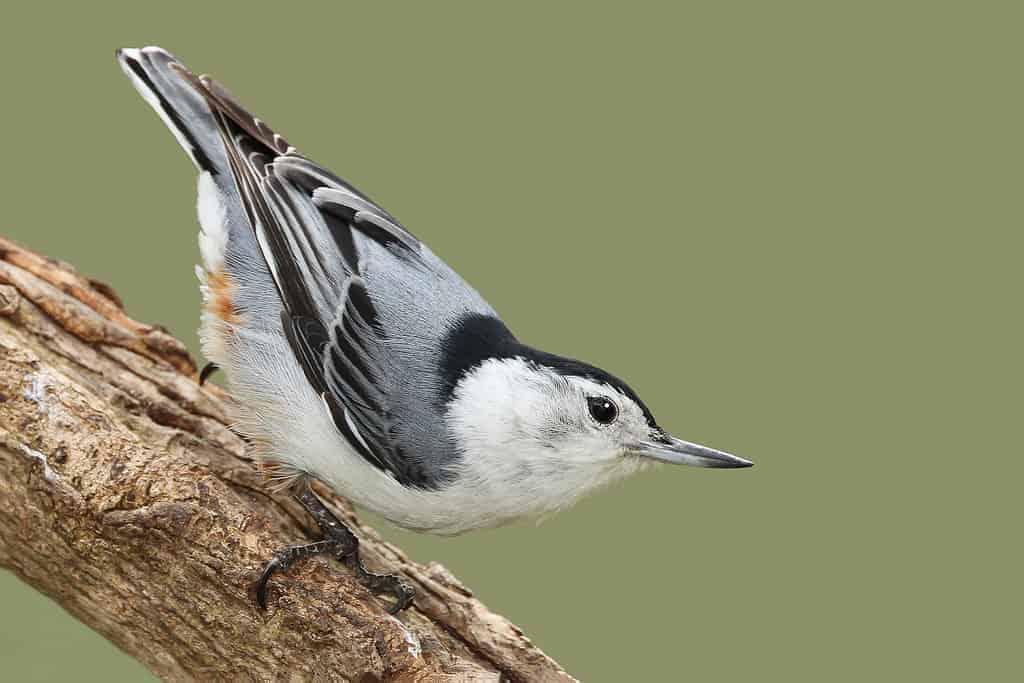
White-breasted nuthatches are permanent residents in Michigan.
©Brian Lasenby/Shutterstock.com
Habitat: They are a permanent resident in Michigan and throughout most of the United States. They live in forests, woodlots, mature deciduous forests, and groves.
How to Identify: A small songbird with a large head, the white-breasted nuthatch has short tails and a long bill. They have bluish-gray backs, white undersides and throats, and black caps.
Diet: Insects and seeds.
Vocalizations: Rapid, nasal “wha-wha.”
Nest: A bark fiber cup in a tree cavity.
9. Black-Throated Blue Warbler
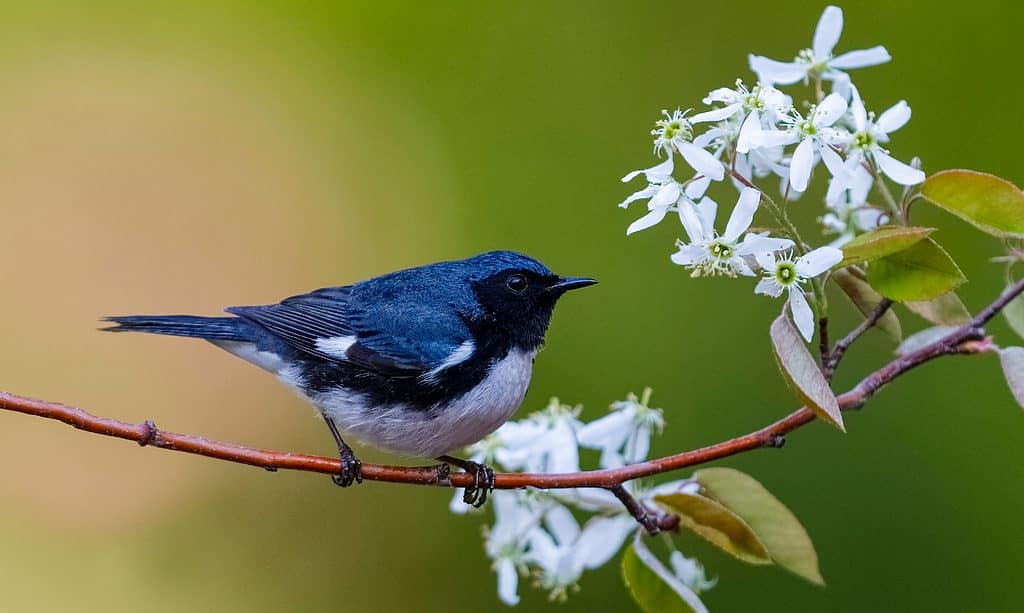
The black-throated blue warbler is well-proportioned and features dark blue, white, and black plumage.
©iStock.com/BrianLasenby
Habitat: The black-throated blue warbler migrates through the state and breeds in the northern tip near the Great Lakes. You can find them in the interior of mixed forests, where they like to breed in undisturbed areas.
How to Identify: These small, plump birds have well-proportioned bodies and pointed bills. Males are streaky dark blue above and white below with black throats and bills.
Diet: Insects, seeds, berries, and flower nectar.
Vocalizations: Slow-paced buzzy notes.
Nest: Open cup of bark in thick shrubs.
10. Eastern Bluebird
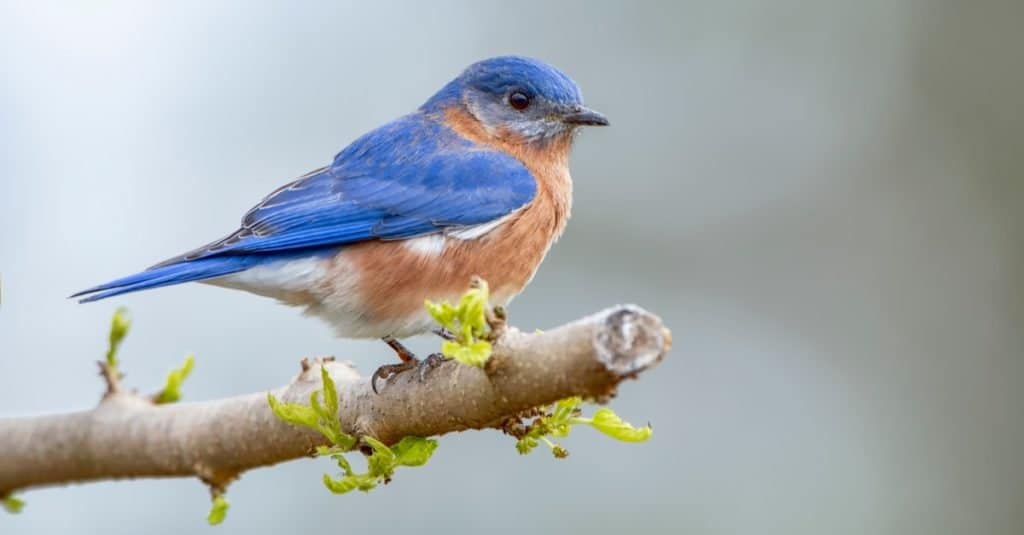
A bluebird can spot caterpillars and insects in tall grass at the remarkable distance of over 50 yards.
©Bonnie Taylor Barry/Shutterstock.com
Habitat: As its name suggests, the eastern bluebird lives in the eastern half of the country, where it spends springs and summers in Michigan during the breeding season. You will find them in open country areas with scattered trees, like farms and forest clearings.
How to Identify: This small thrush has a large, round head with big eyes and short tails. Males are bright blue above, white underneath, and rusty brown on their chests.
Diet: Insects and berries.
Vocalizations: Low-pitched warbles and harsh chatters.
Nest: A weed cup placed in a tree cavity.
11. Belted Kingfisher
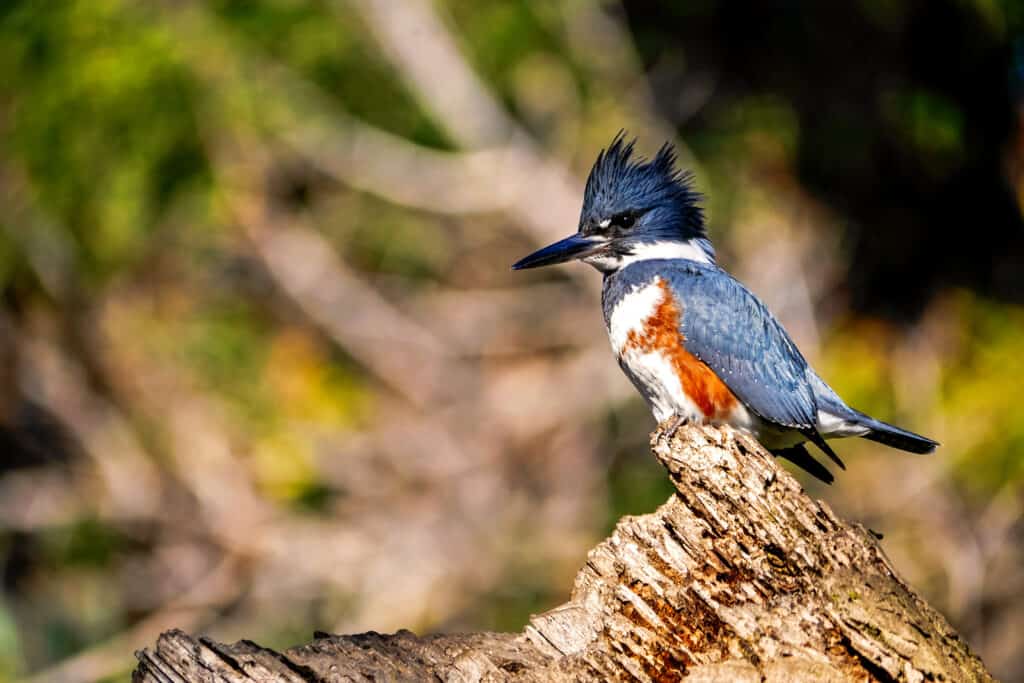
Belted kingfishers live year-round in southern Michigan and spend springs and summers in the northern areas.
©Horse Crazy/Shutterstock.com
Habitat: The belted kingfisher lives year-round in southern Michigan and breeds in northern portions of the state. They live in many aquatic habitats, such as streams, lakes, bays, and coasts.
How to Identify: This stocky bird has a large head and a shaggy crest. They feature bluish-gray plumage on their heads, backs, and chests. Their necks and undersides are white with hints of brown.
Diet: Fish, frogs, aquatic insects, small mammals, and lizards.
Vocalizations: Mechanical rattles and harsh screams.
Nest: Tunnels in steep dirty banks.
12. Common Grackle
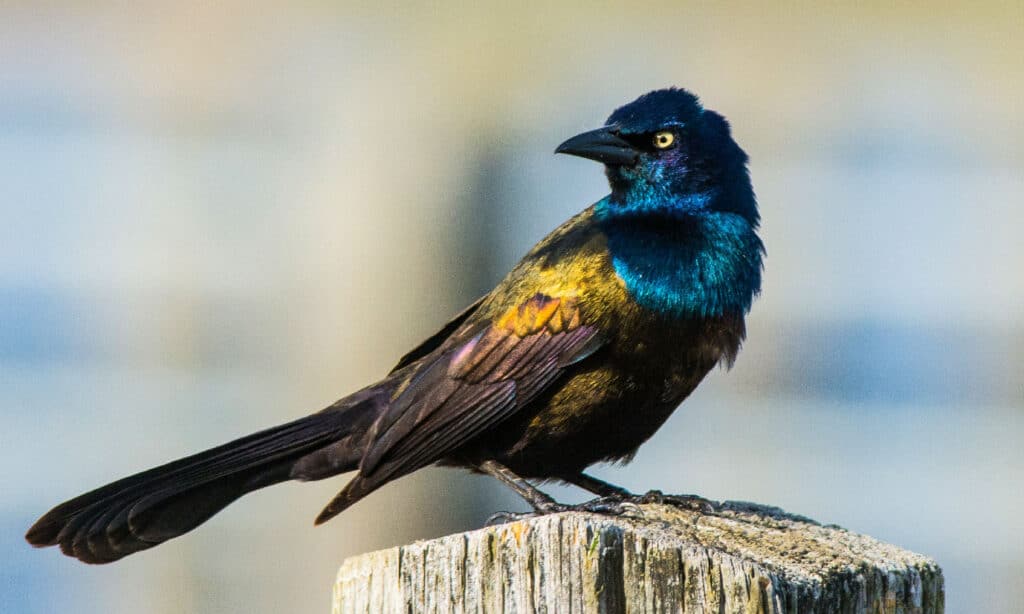
The common grackle is undergoing a continuous decline in its population. It lives in Michigan in spring and summer.
©JoshCW Photo/Shutterstock.com
Habitat: The common grackle breeds throughout most of Michigan, but some populations live year-round in the far southern regions. Look for them in farms, towns, groves, and streamsides.
How to Identify: Large and lanky, the common grackle features long legs and long tails. They have shiny blue and green heads and iridescent bronze bodies.
Diet: Insects, fish, frogs, lizards, eggs, and small rodents.
Vocalizations: Squeaks, whistles, and croaks.
Nest: Bulky weed cup in dense tree branches.
Summary of 12 Blue Birds in Michigan
Here’s a recap of the dozen beautiful blue birds we looked at that can be found in Michigan.
| Number | Bird Species | Coloring | Residency |
|---|---|---|---|
| 1 | Tree Swallow | Bluish-green, white, brownish-black | Breeds in Michigan in spring and summer |
| 2 | Barn Swallow | Deep steely blue, rufous-colored below | Breeds in Michigan |
| 3 | Purple Martin | Iridescent, dark bluish-purple, brownish-black | In Michigan in spring and summer |
| 4 | Indigo Bunting | Male’s summer plumage is blue; head is darker than body | Breeds in Michigan in spring and summer |
| 5 | Northern Parula | Bluish-gray, white, bright yellow, black | Passes through Michigan during migration; small groups breed near the Great Lakes |
| 6 | Blue-Gray Gnatcatcher | Pale bluish-gray, light gray to white, black | Breeds in northern Michigan |
| 7 | Blue Jay | Various shades of blue, black, and white | Lives year-round in Michigan |
| 8 | White-Breasted Nuthatch | Bluish-gray, white, black | Lives year-round in Michigan |
| 9 | Black-Throated Blue Warbler | Males are streaky dark blue, white, and black. | Migrates through Michigan and breeds in the northern tip near the Great Lakes |
| 10 | Eastern Bluebird | Bright blue, white, rusty brown | Breeds in Michigan in spring and summer |
| 11 | Belted Kingfisher | Bluish-gray, white, hints of brown | Lives year-round in southern Michigan and breeds in northern portions of the state |
| 12 | Common Grackle | Shiny blue, green, iridescent bronze | Breeds throughout most of Michigan, but some populations live year-round in the far southern regions |
The photo featured at the top of this post is © Holly S. Cannon/Shutterstock.com
Sources
- Michigan.gov, Available here: https://www.michigan.gov/dnr/things-to-do/wildlife-viewing/birding
Thank you for reading! Have some feedback for us? Contact the AZ Animals editorial team.



